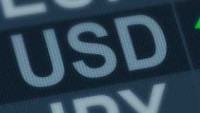 European markets paused for breath yesterday after the downs and ups at the start of the week, with the DAX finishing the day higher, and FTSE100 and CAC 40 slipping back due to weakness in the energy and luxury sector.
European markets paused for breath yesterday after the downs and ups at the start of the week, with the DAX finishing the day higher, and FTSE100 and CAC 40 slipping back due to weakness in the energy and luxury sector.
US markets finished the day modestly higher with the Fed minutes not adding too much extra colour to where rates might go, ahead of today’s US CPI report.
As we look towards today, we look set for a positive start for European markets after the Chinese sovereign wealth fund bought shares in some of the country’s largest banks in a move that had all the hallmarks of a government inspired initiative to boost confidence.
Before that we have a data dump from the UK economy, with the latest GDP numbers for August which should be an improvement in the strike affected July numbers.
Having seen the ONS update its GDP methodology for the last few years we’ve discovered that the UK economy is in much better shape than first thought, and that the UK economy has outperformed both France and Germany since 2020, undermining a political narrative that had claimed that the UK economy has been a basket case since Brexit.
That’s not to say the UK economy doesn’t face its challenges, however the challenges aren’t that much different to its European peers when it comes to trying to combat the effects of higher energy prices, and elevated inflation.
We didn’t get off to a good start to Q3 in July with the economy contracting by -0.5% reversing the 0.5% gain seen in June. Expectations are for a rebound in August of 0.2%, driven by service sector expansion of 0.3%, while manufacturing and industrial production are forecast to improve but still be slightly negative.
The rise in petrol pump prices may well have acted as a brake on consumption in August and which continues to act as a drag in Q3, even as headline CPI slowed to its lowest level since February 2022.
Last night’s Fed minutes didn’t precipitate much of a market reaction, apart from pulling US 10-year yields slightly further off their lows of the day.
The key takeaway from the minutes would appear to suggest that policymakers are probably leaning towards a pause at the very least and that rates would have to stay restrictive for quite some time. It was this point that prompted the sharp move higher in yields at the last meeting along with the revision upwards of expectations of the 2024 Fed Funds rate to 5.1% from 4.6%.
It is important to note that Fed officials do have their dot plot for 2023 to be at 5.6% which would imply one more rate rise this year, either on November 1st or just before Christmas at the December meeting. That doesn’t mean that a rate hike is nailed on in 3-weeks’ time, however it keeps the risks even sided There is some concern that risks to their goals were becoming more two-sided and that they needed to proceed carefully, albeit with risks to inflation tilted to the upside.
With that in mind yesterday’s PPI numbers for September won’t have been particularly welcome given that they came in above expectations. Headline PPI rose 2.2% while August was revised higher to 2% from 1.6%, with most of the gain driven by higher energy prices.
Core prices were also a touch firmer rising to 2.7% from 2.5%. As a forward-looking indicator this isn’t encouraging for CPI later today and given what we saw in reaction to last Friday’s payrolls report there is a risk a strong number could see a sharp snapback after the declines of the last couple of days.
While we’ve heard from several Fed officials this week that they think rates are approaching restrictive territory, that doesn’t mean we are out of the woods quite yet when it comes to the prospect of higher yields.
Recent economic data would appear to suggest that one more rate rise could come before year end, especially since headline CPI has started to tick higher again, although it is also notable that core CPI has continued to drift lower.
While the market has been focussing on the recent rebound in headline CPI from the June lows of 3% to current levels of 3.7% it’s important to understand what’s driving the rebound in headline inflation, which has also pulled headline PPI off lows of 0.2%.
On core prices these have continued to drift lower, and it is here that the Fed’s attention is likely to be focussed.
Core CPI in August fell to 4.3% and is expected to slow further in September to 4.1%, while core PPI also slowed to 2.2% in August.
If the weaker trend of slowing core continues in September, the Fed may well look through the stickiness in headline inflation and decide to sit on its hands in November. Headline inflation is expected to remain steady at 3.7% for September.
EUR/USD – at trend line resistance from the July highs at 1.0640, with a break above 1.0650 targeting the 1.0740 area. The main support remains at last week’s lows at 1.0450, as well as the 1.0400 area which is 50% retracement of the 0.9535/1.1275 up move.
GBP/USD – edging above 1.2300 as it looks for a potential move to the 1.2430 area and 200-day SMA. A move below 1.2000 targets the 1.1835 area which equates to a 50% retracement of the move from the record lows at 1.0330 to the recent peaks at 1.3145.
EUR/GBP – looks to be testing trend line support from the August lows which is currently intersecting at the 50 and 200-day SMA. Resistance at the 200-day SMA at 0.8720 area.
USD/JPY – currently range trading above last week’s lows with the main resistance at last week’s highs at 150.16. Below 147.30 signals the top is in and a possible move towards 145.00.












